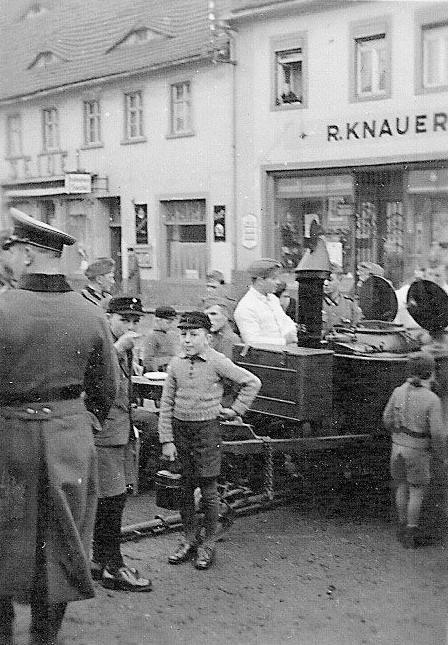
"Gulaschkanone: The German Field Kitchen" Topic
3 Posts
All members in good standing are free to post here. Opinions expressed here are solely those of the posters, and have not been cleared with nor are they endorsed by The Miniatures Page.
For more information, see the TMP FAQ.
Back to the WWII Discussion Message Board
Areas of InterestWorld War Two on the Land
Featured Hobby News Article
Featured Recent Link
Top-Rated Ruleset
Featured Showcase Article
Featured Profile Article The game table created for an Arc of Fire game at Cold Wars 2005.
Featured Book Review
|
| Tango01 | 12 Feb 2025 4:00 p.m. PST |
"The German field kitchen (Gulaschkanone) was like everything associated with the Wehrmacht carfully stududied and thought out. The objective was to ensure that every German soldier got at least one hot meal every day. The German Gulaschkanone or field kitchen was an efficient means of providing large quantities of nourishing hot meals using the the minimum of resources. Meal menus regularly included both potato soup and pea and ham soup as well as all sorts of stews. Meals were accompanied by a bread or biscuit ration. The Germans set up a food system that when the campaigns were going right ensured that the soldiers were well fed. The daily ration for each German soldier was determined by OKW, taking into account the soldier's assignment and theater of operations. The Whermacht had a different approach than the American Army. The Whermacht had an offensive ethos and thus with planned to acquire supplies in the countries occupied. It confiscated supplies or in some cases purchased them for both men an animals. (The Whermacht still relied on draft animals.) These confiscated foodstuffs to supplement or as far as possible replace military rations. Confiscating food stuffs from the Belgians in World War I caused enormous suffering among civilians and was part of the reason that the German Army acquired a reputation for brutality that it never lost and fully lived up to in World War II. The standard operation was for units to maintain a 10-day reserve for every soldier on its established strength. The daily ration (Portionsatz) consisted of three meals, breakfast (1/6 daily callories ), lunch (1/2), and evening meal (1/3). A small issue of wine was added during the summer. There were several different categories: Type 1, Type II, Type III, Type IV, Iron Rations, Combat and Close Combat Ration Packs, March Ration, and Animal Rations. Meals when possible were cooked centrally. The Wehrmacht despite its reputation had both mechanized and non-mechanized units. There were horse-drawn wood-burning field kitchens or Gulaschkanone in non-mechanized units and comparnle field cooking ranges mounted on trucks for Panzer and Panzergrenadier units. Field kitchens were categorized either as large (catering for 125-225 men) or small (catering for 50-125 men), with other types of field cooking equipment issued to units of less than 60 men. [Thompson] When the War began going against the Germans, the system begn breaking diwn, especially dilivering hot meals without air cover. And we notice the Germans setting up Gulaschkanone to feed refugees and civilians after air raids. Serious problems developed as the Wehrmacht retreated ihto the Reich and could no longer seize food from occupied countries…"

Main page
link
Armand
|
 The Virtual Armchair General The Virtual Armchair General  | 13 Feb 2025 11:25 a.m. PST |
I can hardly imagine a more useful (even if only for "ambiance") model for the appropriate table top than a field kitchen. One is offered in 54mm cardstock for self assembly at TVAG
( link ) for use with "Funny Little Wars," or any 54mm wargames. But, I'd like to see them in 28mm, 20mm, and most any other scale well suited to WW II, particularly for skirmish games and scenarios where troops may operate behind enemy lines. Neat article, Tango. Thanks! TVAG |
| Tango01 | 13 Feb 2025 2:54 p.m. PST |
Not mention my friend… Armand |
|

